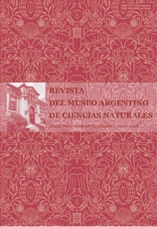Cretaceous theropods from India: A review of specimens described by Huene and Matley (1933)
Resumen
The Late Cretaceous (Maastrichtian) Lameta Formation of central India has yielded dissociated elements of a variety of predatory dinosaurs, most of them coming from a quarry named the "Carnosaur bed." The materials were described by Huene and Matley nearly 70 years ago. They recognized nine theropod species, which they sorted out into the theropod subgroups "Carnosauria" and "Coelurosauria". Huene and Matley also described a considerable amount of theropod hindlimb bones (e.g., femora, tibiae, metatarsals, and pedal phalanges) that they could not refer to any of these species, but vaguely interpreted as corresponding to "allosaurid" or "coelurosaurid" theropods. We reviewed the available collection of Cretaceous theropods from Bara Simla housed at the Geological Survey of India, Calcutta, arriving to the following conclusions: 1) Indosuchus and Indosaurus are abelisaurids, as recognized by previous authors, but available information is not enough to judge whether they are synonyms; 2) Laevisuchus indicus is a small abelisauroid, related to Noasaurus and Masiakasaurus on the basis of their peculiar cervical vertebrae; 3) the controversial taxa "Compsosuchus", "Dryptosauroides", "Ornithomimoides", and "Jubbulpuria" are represented by isolated vertebrae corresponding to different portions of the neck and tail, and also exhibit abelisauroid features; 4) hindlimb bones originally referred to as "allosaurid" and "coelurosaurian" also exhibit abelisauroid characters, and bones of large size are tentatively referred to as corresponding to Indosuchus or Indosaurus, whereas some pedal bones of smaller size may belong to Laevisuchus; 5) two kinds of abelisaurid feet are apparent: one in which the phalanges of digit III and IV are robust, and another type in which the phalanges of digit IV are transversely narrow and dorsoventrally deep. This review demonstrates that all of the theropod elements discovered at the "Carnosaur bed" belong to a single theropod clade, the Abelisauroidea
Texto completo:
PDFEnlaces refback
- No hay ningún enlace refback.

This work is licensed under a Creative Commons Attribution 3.0 License.

